
Optica Pura y Aplicada
Scope & Guideline
Charting New Paths in Optics and Engineering
Introduction
Aims and Scopes
- Optical Engineering and Instrumentation:
Research related to the design, development, and application of optical systems and instruments, including spectrometers, cameras, and sensors. - Biomedical Optics and Photonics:
Studies that explore the application of optical technologies in medicine, including photodynamic therapy, imaging techniques, and diagnostics. - Material Science and Nanophotonics:
Research on the optical properties of materials at the nanoscale, including studies on photonic crystals, thin films, and advanced materials for photonic applications. - Optical Theory and Simulations:
Theoretical investigations and computational modeling of optical phenomena, including diffraction, interference, and light-matter interactions. - Education and Outreach in Optics:
Initiatives that promote understanding and engagement with optics and photonics, including educational tools, workshops, and community outreach programs.
Trending and Emerging
- Integration of Photonics in Technology:
A growing emphasis on integrating photonics with technology, particularly in telecommunications, quantum computing, and sensory devices, shows the journal's alignment with current technological advancements. - Women in Optics and Photonics:
Increased publication frequency addressing gender diversity and inclusion in the field indicates a positive trend towards recognizing and supporting women's contributions in optics and photonics. - Machine Learning and AI in Optics:
Research exploring the application of machine learning and artificial intelligence techniques to solve complex problems in optics is emerging, highlighting the intersection of these fields. - Environmental and Health Applications:
There is a notable increase in studies focused on environmental monitoring and health-related applications of optics, showcasing the journal's responsiveness to global challenges. - Advanced Imaging Techniques:
Emerging interest in sophisticated imaging methods, such as hyperspectral imaging and digital holography, suggests a trend towards enhancing image capture and analysis in various applications.
Declining or Waning
- Historical Studies in Optics:
Papers focusing on the historical development of optics and its pioneers have seen a decline, suggesting a shift towards more contemporary applications and technologies. - Basic Optical Experiments and Demonstrations:
There is a noticeable reduction in publications centered on basic optical experiments, which may reflect a growing emphasis on advanced and applied research rather than educational demonstrations. - Traditional Optical Materials:
Research specifically focused on conventional optical materials (e.g., glass) is becoming less prevalent, indicating a trend towards exploring novel materials with enhanced properties.
Similar Journals

Optics Continuum
Exploring the Boundaries of Optical EngineeringOptics Continuum, published by Optica Publishing Group, is a pioneering open access journal dedicated to advancing the field of optics and photonics. Since its inception in 2022, this journal seeks to provide a vital platform for the dissemination of groundbreaking research and innovative developments across several interconnected domains, including electrical and electronic engineering, atomic and molecular physics, and material sciences focused on electronic, optical, and magnetic materials. With impressive rankings in Scopus—placed #384 in Electrical and Electronic Engineering and #109 in Atomic and Molecular Physics—the journal aims to engage a diverse readership comprised of researchers, professionals, and students, promoting collaboration and knowledge exchange. The journal's open access model ensures that cutting-edge research is readily available to all, nurturing an inclusive academic environment. For those interested in staying at the forefront of optics research, Optics Continuum is an essential resource that continuously enriches the global scientific community.
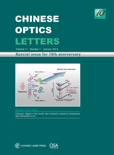
Chinese Optics Letters
Advancing the frontiers of optical research.Chinese Optics Letters is a prestigious academic journal published by Chinese Laser Press, dedicated to advancing the fields of atomic and molecular physics, optics, as well as electrical and electronic engineering. Since its inception in 2003, this journal has become a significant platform for researchers and professionals to disseminate innovative findings and foster collaboration within these rapidly evolving disciplines. With a commendable Q2 ranking in leading categories including Atomic and Molecular Physics and Electronic, Optical and Magnetic Materials, it ranks favorably within the Scopus database, with notable positions in both engineering and materials science sectors. The journal is headquartered in Shanghai, China, and while additional open access options are not specified, it remains a vital resource for those committed to pushing the frontiers of optical research and applications. As we approach 2024, Chinese Optics Letters continues to play an essential role in shaping scholarly discourse and technological advancement in optics.
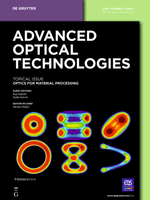
Advanced Optical Technologies
Pioneering Innovations in Light and MaterialsAdvanced Optical Technologies is a reputable journal dedicated to advancing the field of optics and photonics, published by FRONTIERS MEDIA SA in Switzerland. Since its inception in 2012, the journal has made significant contributions to the domains of Atomic and Molecular Physics, Electronic, Optical and Magnetic Materials, and Instrumentation, achieving commendable rankings within these categories, including a Q2 quartile classification in 2023. With an emphasis on open access, Advanced Optical Technologies aims to facilitate the rapid dissemination of research findings, thereby fostering collaboration and innovation among researchers, professionals, and students alike. The journal serves as an essential platform for cutting-edge research articles, reviews, and technical notes, and its commitment to quality is reflected in its robust Scopus rankings. As the field of optical technologies continues to expand, this journal plays a crucial role in highlighting pivotal advancements and promoting interdisciplinary dialogue among scholars in the scientific community.

Advanced Photonics
Leading the Charge in Photonics ExcellenceAdvanced Photonics, published by SPIE-SOC PHOTO-OPTICAL INSTRUMENTATION ENGINEERS, is a prestigious open-access journal dedicated to cutting-edge research in the fields of photonics, optics, biomedical engineering, and material science. Since its inception in 2019, this journal has successfully established itself in the top quartile (Q1) of various categories, including Atomic and Molecular Physics, Biomedical Engineering, and Electronic, Optical and Magnetic Materials, showcasing its critical role in advancing knowledge and innovation within these disciplines. With impressive Scopus rankings—#8 in Biomedical Engineering, #7 in Atomic and Molecular Physics, and #10 in Materials Science—Advanced Photonics serves as an essential platform for researchers, professionals, and students alike, offering a wealth of accessible scholarly content to keep pace with rapid technological developments. The journal not only fosters collaboration and knowledge dissemination within the global scientific community but also emphasizes the importance of open access to ensure that groundbreaking research benefits society as a whole.
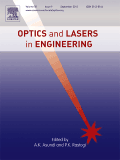
OPTICS AND LASERS IN ENGINEERING
Shaping the Future of Engineering with Optical PrecisionOPTICS AND LASERS IN ENGINEERING, published by Elsevier Science Ltd, is a premier journal dedicated to advancing the field of optics and laser technology in engineering applications. With a robust ISSN of 0143-8166 and E-ISSN 1873-0302, this journal is positioned within the top quartile (Q1) across several categories, including Atomic and Molecular Physics, Electrical Engineering, and Mechanical Engineering as of 2023, showcasing its prestige and impact in the scientific community. The journal has consistently ranked high in Scopus, notably within the top 10% for Mechanical Engineering and Electronic, Optical, and Magnetic Materials research. Since its inception in 1980, OPTICS AND LASERS IN ENGINEERING has served as a vital platform for disseminating cutting-edge research, fostering innovation and collaboration among researchers, professionals, and academia. Though it does not currently offer Open Access options, its high impact factor and selective publication process ensure that articles reach a wide audience while maintaining rigorous academic standards. Researchers and students alike are encouraged to engage with this influential journal to contribute to and stay abreast of advancements in optical technologies and their engineering applications.
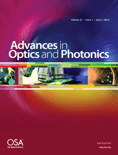
Advances in Optics and Photonics
Bridging Theory and Application in OpticsAdvances in Optics and Photonics, published by the Optica Publishing Group, stands at the forefront of research dissemination in the fields of Atomic and Molecular Physics and Optics, alongside its prominence in Water Science and Technology. With an impressive Q1 ranking in both categories and a Scopus rank of #2/224, this journal boasts a 99th percentile status, underscoring its significance in the academic community. As a beacon of knowledge since its inception in 2009, the journal is dedicated to featuring cutting-edge research, innovative methodologies, and transformative applications in optics and photonics that can drive advancements across diverse scientific domains. While not an open-access journal, it provides vital insights for researchers, professionals, and students eager to stay updated on emerging trends and breakthroughs. With a convergence period extending to 2024, Advances in Optics and Photonics is positioned as an essential resource for anyone looking to explore the evolving landscape of light-based technologies.
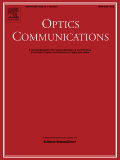
OPTICS COMMUNICATIONS
Unveiling Breakthroughs in Optical ScienceOptics Communications, published by Elsevier, is a prestigious international journal that focuses on the dynamically evolving fields of optics and photonics. With its ISSN 0030-4018 and E-ISSN 1873-0310, this journal has made significant contributions to the fields of Atomic and Molecular Physics, Electrical and Electronic Engineering, Electronic, Optical and Magnetic Materials, and Physical and Theoretical Chemistry, consistently ranking in the Q2 quartile across these categories for 2023. The journal, based in the Netherlands, is recognized for its rigorous peer-review process and aims to publish high-quality research articles that advance knowledge and applications in optical communication technologies. Although it operates under a subscription model, the insightful research published here plays an essential role in informing the work of researchers, professionals, and students alike. With a history dating back to 1969 and spanning well into 2025, Optics Communications remains a crucial resource for cutting-edge developments in optics, catering to a global audience dedicated to innovation in this pivotal science.

JOURNAL OF MODERN OPTICS
Bridging Theory and Practice in Modern OpticsJOURNAL OF MODERN OPTICS, published by Taylor & Francis Ltd, stands as a prominent bi-monthly journal contributing to the fields of Atomic and Molecular Physics and Optics. With an ISSN of 0950-0340 and an E-ISSN of 1362-3044, this journal aims to disseminate high-quality research that pushes the boundaries of optical science and its applications. Since its inception in 1981, and particularly throughout its publications from 1987 to 2024, the journal has consistently published influential studies that are essential for both academic researchers and industry professionals. Ranked in the Q3 quartile for the 2023 category of Atomic and Molecular Physics and Optics, it has a Scopus ranking of #133 out of 224, indicating its steady presence and relevance in the scientific community. Although it does not offer Open Access options, readers can access its rich repository of literature that delves into innovative optical methods, technological advancements, and theoretical frameworks. The JOURNAL OF MODERN OPTICS is an indispensable resource for those seeking to advance their knowledge and research in modern optical science.
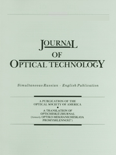
JOURNAL OF OPTICAL TECHNOLOGY
Illuminating the Future of Optical InnovationJOURNAL OF OPTICAL TECHNOLOGY, published by the Optica Publishing Group, serves as a vital resource for researchers and professionals in the fields of optical technology and related disciplines. Established with a commitment to advancing knowledge, this journal spans a broad spectrum of topics, including applied mathematics, atomic and molecular physics, and various engineering disciplines, with a converged publication period from 1995 to 2024. Although it currently holds a Q4 ranking across multiple categories in 2023, it is an important platform for innovative research ideas in a rapidly evolving field. The absence of Open Access may guide readers to explore alternative access options through institutional subscriptions. The journal’s ISSN is 1070-9762 and its E-ISSN is 1091-0786, ensuring accessibility for a global audience. As a publication aimed at fostering scholarly communication, it invites contributions that highlight emerging trends and novel developments in optical technology, catering to a multifaceted audience of researchers, professionals, and students.

OSA Continuum
Bridging Theory and Application in Optical SciencesOSA Continuum, published by the Optica Publishing Group, is a distinguished open access journal dedicated to advancing research in the realms of Atomic and Molecular Physics, Optics, and Electronic and Electrical Engineering. Since its inception in 2018, this journal has rapidly positioned itself as a significant platform for disseminating cutting-edge findings, achieving impressive Scopus rankings with a 61st percentile in Electrical and Electronic Engineering and 57th in Atomic and Molecular Physics. Based in the United States, the journal not only promotes scholarly dialogue among researchers and professionals but also plays a crucial role in bridging theoretical advances with practical applications in optical and material sciences. Its open access format ensures broader visibility and accessibility of research outputs, fostering innovation and collaboration across disciplines. With its ongoing commitment to excellence, OSA Continuum is crucial for anyone involved in these dynamic fields.